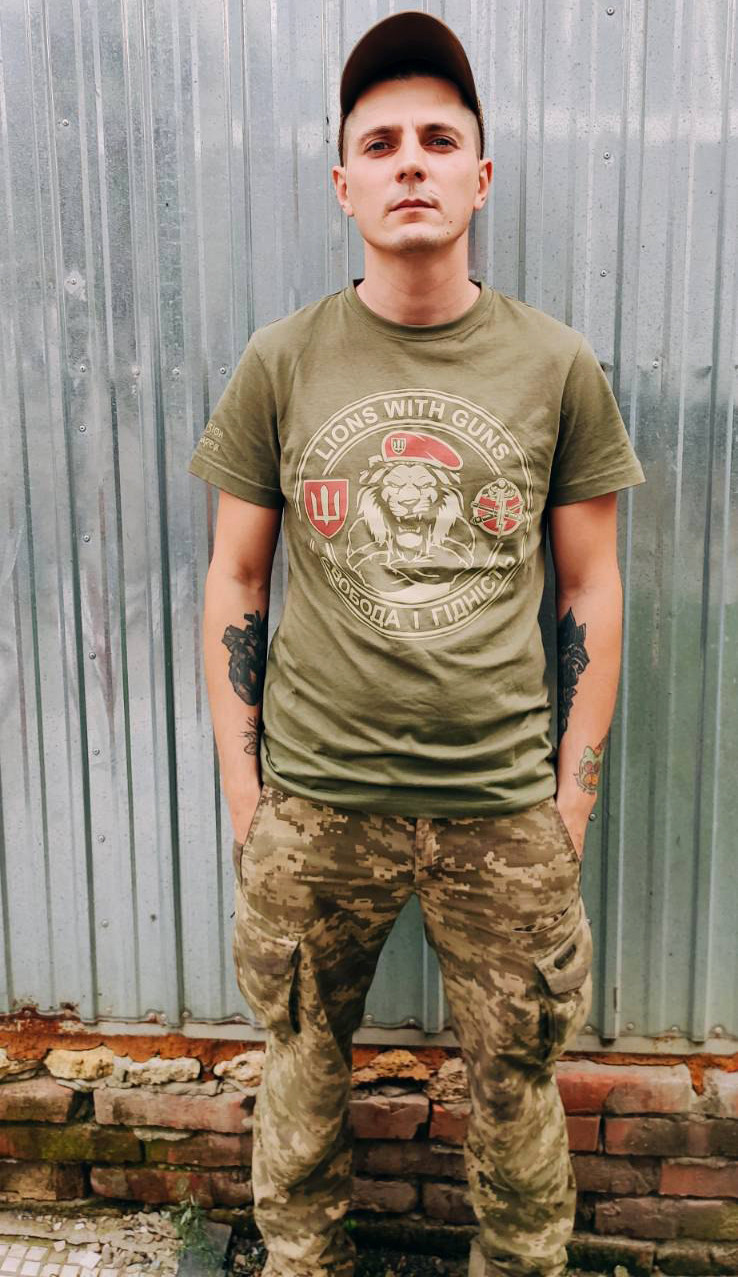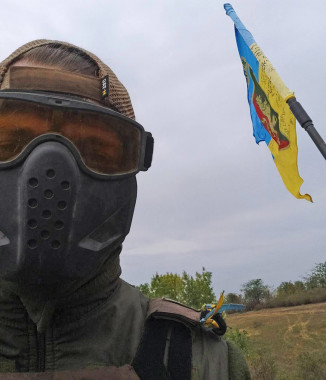
Ukraine's Heroes. Russians shelled for 6 to 7 hours every day with all weapons they had in their arsenal: artilleryman describes battles in Luhansk region
Andrii Shestopalov, a soldier with the 24th Brigade, notes that back in March, the Russians had an advantage in everything, and now the situation at the front has changed a lot
He told his story from the front to the Espreso journalist.
Andrii Shestopalov with the call sign Marvel is an artilleryman with the 24th Detached Mechanized Brigade named after King Danylo. From March 2022, he defended Ukraine in the Luhansk region. The man knows what it was like at the beginning of Russia's full-scale invasion of Ukraine, and can compare the strength of the Ukrainian army after foreign artillery appeared on the front.

Andrii Shestopalov's military career began in 2017. He voluntarily joined the Military Commissariat and signed a contract for three years.
"I didn't care which brigade I joined," Andrii said. "I came to the military commissariat and said I wanted to serve. But I didn't want to do military service, so I immediately signed a contract. They offered me to go and serve in the 24th Brigade. They advertised the biggest Yavoriv military base. They said that the Americans were training our soldiers there. But they warned that the combat brigade could be sent to the front. I agreed and went to the training center the very next day."
The Russians shelled the villages, but we could not respond
After four months of training, Andrii Shestopalov went to the frontline for the first time. For three years, he fought in the Donetsk region, in the Horlivka, Marinka areas, and in Svitlodarsk.
"It was a little scary at the beginning, since I had never served and did not understand anything about the positions," the soldier admits. "We stood far away and were not constantly bombarded. We knew that the Russians were shelling the villages, but we could not do anything about this. From then on, everything went to a greater calm."
In 2020, the man's contract ended and he returned to civilian life. At the time of Russia's full-scale invasion of Ukraine, Andrii Shestopalov was working in Poland.
"On February 24, my sister called me in tears. She told me that the Russians had started bombing Kyiv," Andrii recalls. "At first I didn't believe it and started looking for news. But the next day, my brothers confirmed to me that Russia did dare to go to full-scale war. So I immediately accepted the decision to return. Due to unfinished business, I was able to return to Ukraine only in March. I went to the unit, and later to the front."
When the shelling continued, we got into the cars and practiced on the targets. We drove with the thought that this might be our last foray
Andrii notes that he did not expect such powerful combat operations. The situation was completely different than before February 24, 2022. The hardest time at the front was at the beginning of a full-scale invasion. The shelling could not stop for hours, and the advantage of the Russians was obvious.
"We were shelled for six or seven hours continuously with all the weapons that the Russians had," a military man says. "Grad, Uragan systems, and artillery were working, as well as cluster bombs were flying. After one hit, there was such a gap that two people would have to be put down to reach the edge. The Russians were very successful with drones. Their Orlan drones flew constantly, and it was difficult to hide from them. There were no leaves then, so we covered the cars with ordinary branches and dry grass, almost earth. Sometimes they shot past our positions, and sometimes they didn't let us get out of hiding. If they saw our cars using drones, they were waiting for us to come out of the dugouts and trenches and get to the cars. Only then did they start shelling. Since the artillery from which they were firing was not the most accurate, we were lucky because there were misses and overflights, and a projectile flew somewhere sideways. Phosphorus bombs were not used on us, but they flew over the villages. Almost all landings were burned."
During Russia's full-scale invasion, the work of the military changed significantly.
"Earlier, we trained on enemy positions and ran away. Now we take positions and stand until the end," Andrii says. "It's a long process - to arrive, set up the guns, and orient ourselves. And the infantry can't wait for it to be covered. There was nowhere to retreat. We were moving, changing positions, digging in. It was much scarier than anything I had ever seen in my life. The shelling was constant, especially when they had a lot of ammunition. The Russians shelled everything almost every hour. Therefore, even when the shelling continued, we got into the cars and practiced on the targets. We drove with the thought that this might be our last foray. At the beginning of the "great war", we did not have such luxuries as drones or quadcopters. We started fighting with nothing compared to what we have now."
Now the military continues to defend Ukrainian borders. He says, albeit slowly, Ukrainian soldiers are gradually liberating the seized territories.
"There are constant battles," Marvel notes. "But the situation has changed a lot since we got the HIMARS artillery systems. There have been fewer shellings from the Russian side. They are probably trying to protect the shells. Another factor is that we have more and more foreign artillery, and we already have a certain advantage. What happened in the spring was defense, and now Ukraine's Armed Forces are trying not only to stand on the defensive, but also to attack. Now it's a completely different war. And it has not yet worked for Lend-Lease. When it works, the liberation of Ukrainian territories will become more visible and faster."
Espreso continues the series of stories about Heroes of Ukraine who defended and are defending the country from the invading Russian forces. Read more stories in our column of the same name "Heroes of Ukraine."
All photos are from the archive of Andrii Shestopalov.
- News













































